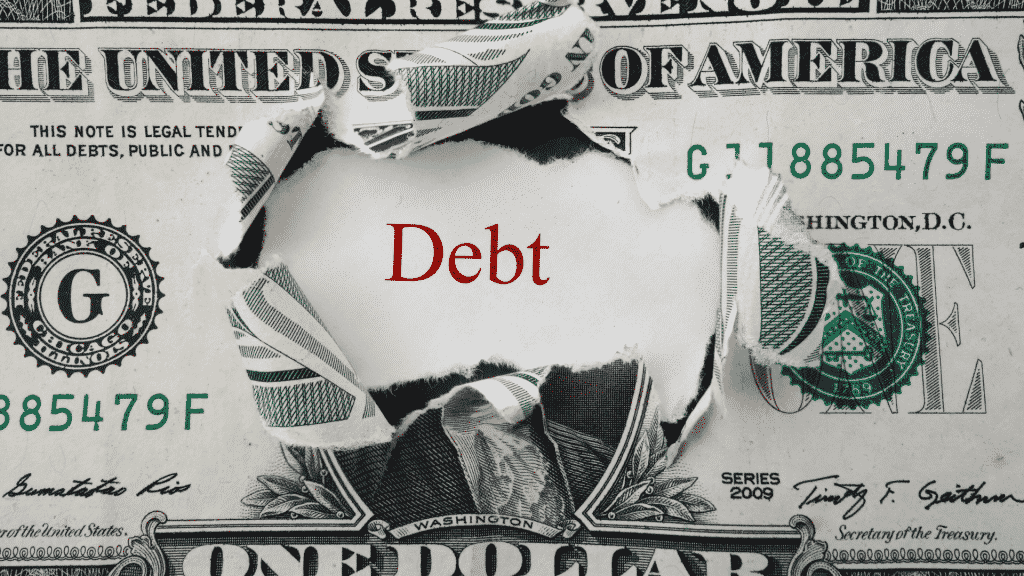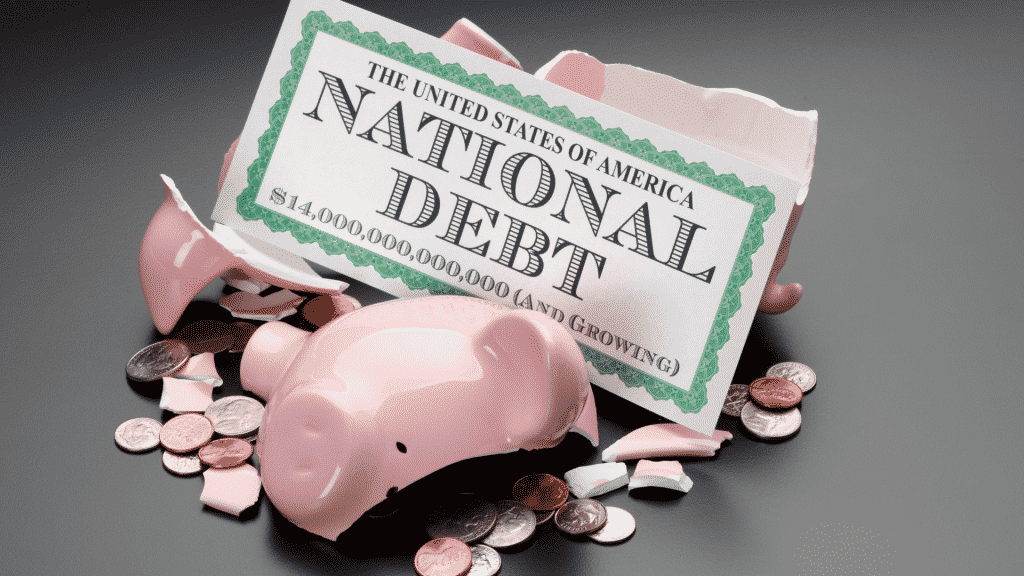debt-to-GDP ratio in South Africa
The debt to GDP ratio is a measure of whether a country is able to pay back public, private debts.
The debt-to-GDP ratio is a measure of whether a country is able to pay back its public and private debts. It’s measured as total debt divided by yearly gross domestic product (GDP), which measures the size of a country’s economy.
When countries have higher debt-to-GDP ratios, they can find it more difficult to pay off their debts. They may be spending more on interest payments than they are earning in revenue. If this happens, their ability to repay other creditors could be threatened and their access to funding could be limited.
South Africa’s household debt-to-GDP ratio has increased over the past decade.
The debt-to-GDP ratio is the amount of money owed by a country divided by its gross domestic product (GDP). As you might have guessed, it’s calculated as:
The increase in the household debt-to-GDP ratio has been larger than that of government debt.
The household debt/GDP ratio is the most important indicator of future economic growth in South Africa. It is not surprising that you hear about it on radio, TV and newspapers. But what does this mean?
The debt-to-GDP ratio measures a country’s total private sector debt divided by its GDP. The higher the ratio, the greater the risk of default or insolvency, meaning your ability to pay off your debts may be put at risk if there is an economic downturn.
Why should we care about this? Well, households are more likely than governments to default due to unemployment and business failure where they can’t afford their mortgage payments anymore or any loans they have taken out such as car finance or credit card debt etcetera…

The key risk is that households will not be able to service this debt.
The key risk is that households will not be able to service this debt.
The debt service ratio measures whether the household can service its debt obligations. It is calculated by dividing the total debt service payments by the total gross income.
The debt service ratio measures the proportion of the gross income that is spent on debt servicing. It has a direct link to income growth and credit access.
Loan to value ratio
Loan to value ratio is the ratio of a bank’s loan to the value of an asset. This can be used as a measure of how risky it is for the bank, Who will then decide how much they’re willing to lend. For example, if you only have R100 and want R1000 worth of stuff (which we’ll call “assets”), but don’t have any collateral or savings/income that would back up your borrowing – meaning you couldn’t pay back what you borrowed even if all your assets were taken away from you – then banks won’t lend any money because there’s too much risk involved.
The key risk is that households will not be able to service this debt.
The debt service ratio measures whether households can service their debt obligations. It is calculated by dividing total payments of interest, principal and other financial charges (including taxes) by the total gross income. The higher the debt service ratio, the greater a household’s burden of servicing its debts and vice versa.
South Africans are becoming increasingly over-indebted.
South Africans are becoming increasingly over-indebted. This has been said by various economists, as well as some of the country’s leading financial institutions such as Standard Bank and Nedbank.
According to them, there are a number of factors contributing to this rise:
- Increase in unemployment, business failure and home repairs due to inclement weather;
- The cost of living is increasing faster than salaries;
- Higher credit card usage (and subsequent debt).
This can lead to credit rating downgrades and, ultimately, a sovereign default.
When a country’s debt-to-GDP ratio increases, this can lead to a credit rating downgrading. A credit rating downgrade is when a credit rating agency lowers the credit score of a country. This has an impact on the interest rates of a country, as well as its currency.
South Africa’s high household debt levels pose a significant risk to the economy.
South Africa’s high household debt levels pose a significant risk to the economy. This is due to the fact that, should economic conditions worsen and incomes fall, households may be unable to service debt payments. If this were to happen, the banks would experience losses and would subsequently restrict lending activity; which in turn could lead to credit rating downgrades for South African government bonds (the country’s sovereign debt instruments) and ultimately result in a sovereign default.
Real Estate Assist is the Solution for many property owners in debt
Real Estate Assist is the solution for many property owners in debt. We have saved many property owners from debt review cycles and have helped them to reduce or completely clear all debt, stop repossessions and helped them unlock equity. Do you have an auction scheduled? Reach out to us and we will do our best to stop the auction like we have for many homeowners.
We are also able to help you with your cash flow by providing a steady income stream from your investment properties, so that you can focus on other things in life!

Debt Ratio
Definition
To calculate the debt ratio you divide a company’s total liabilities by its total assets.
To determine your personal debt ratio, add up all of your debts and divide that number by your total assets. The lower this number is, the better it is for lending purposes. It means less of your wealth will be used to pay back loans or other forms of credit.
Debt ratio is a financial ratio that indicates the percentage of a company’s assets that are provided via debt. It is the ratio of total debt and total assets of the company.
The formula for calculating debt ratio is simple:
“`(1.3)*(total liabilities/total assets)“`
This gives us the percentage of total assets that are financed by debt. In other words, it indicates what percentage of a company’s assets have been obtained with borrowed money.
If you’re wondering how to calculate debt to equity ratio, then simply add up all of your company’s equity and subtract that sum from the amount of total liabilities.
Debt ratio is useful in determining whether or not a company might be able to meet its financial obligations if they come due as expected. The higher this number is above 100%, the more likely things will go south should an unexpected expense arise or revenue falls short for longer than anticipated.
A low debt ratio means that most of your business growth has come from profits rather than borrowing additional funds against existing capital; conversely, when this number drops below 50% (or less), it may indicate insufficient cash flow or poor management practices on behalf of those who manage your business finances
Two Variations
There are two variations of the debt ratio. The first, called the long-term debt ratio, is calculated by dividing total long-term debt by total assets. The second, called the short-term debt ratio, is calculated by dividing total short-term debt by total assets.
While they both measure a company’s ability to pay off its obligations, these numbers will be different depending on how your business uses its money. For example: if you’re borrowing money for a project with stable returns (like buying office supplies), a long-term loan might make sense—but if you need help paying your rent or utilities next month and don’t have any cash flow to spare from this month’s sales receipts yet…short term may be better!
Two variations of the debt ratio exist:
Two versions of the debt ratio exist: one that measures long-term debt against total assets, and one that measures short-term versus long-term. The former is called long-term debt ratio, and it indicates how much of a company’s assets are financed by borrowed money. The latter is called short-term debt ratio, and it indicates how much money a company owes to creditors who expect repayment within 12 months.
Both ratios can be calculated with two simple formulas:
- Long term debt / Total Assets = Long Term Debt Ratio (%)
- Short term liabilities / Total Assets = Short Term Debt Ratio (%)
The long-term debt ratio is calculated by dividing total long-term debt by total assets, while
The long-term debt ratio is calculated by dividing total long-term debt by total assets, while the short-term debt ratio is calculated by dividing total short-term debt by total assets. The idea behind both of these ratios is to determine how much a company is leveraged (i.e., using borrowed funds), as well as to determine its ability to pay back those loans over time.
To illustrate this concept further, let’s say you buy a house with R500,000 in cash and take out a mortgage for R150,000. Your leverage ratio will be 50%, because 50% of your assets are financed through debt. If your home appreciates in value over time and you sell it for R600,000 five years later (while paying off all principal), then your leverage has been beneficial since it enabled you to earn R100k more than what was put down initially!
The same principles apply when considering short term versus long term debt. If I borrow money from my friend Tom tomorrow so I can go on vacation next month—and pay him back when I’m done—then my current liability will show up as an asset until I pay him back – at which point it becomes equity again (assuming no interest was accrued).
the short-term debt ratio is calculated by dividing total short-term debt by total assets.
The short-term debt ratio is calculated by dividing total short-term debt by total assets. The formula for the short-term debt ratio is:
Short-term Debt / Total Assets = Short-Term Debt Ratio
So, for example, if a business has R1 million in total assets and R5 million in short-term loan balances, the business’s short-term debt ratio would be 20%.
In this equation, there are two different types of assets that can be used to calculate a company’s equity position: current assets and fixed assets. Current assets include cash on hand or any other type of liquid asset like accounts receivable or inventory that can be converted into cash within one year; current liabilities include things like bills due within one year (bills such as payroll taxes) and creditors looking for payment within one year (such as credit card companies). Fixed assets are those items that aren’t going to turn into cash anytime soon—they’re usually buildings or machinery that will provide long term benefits for your business but require a significant initial investment (e.g., R1 million worth of new printing presses).

Equity Ratio
The equity ratio provides an indication of the financial strength of a company. It calculates if the company has sufficient amount of shareholder funds to pay off its debt obligations if they were to become due today. The higher this number, the better it is for investors, because it means there are more assets than liabilities.
The formula for calculating the equity ratio is:
(Shareholder Equity + Non-Current Debt) / Total Assets
It is inversely related to the debt ratio and shows a picture of the financial strength of a company. The lower the equity ratio, the higher will be Debt Ratio. The equity ratio is calculated by dividing Shareholder’s Equity (also known as Owner’s Equity) by Total Assets.
The debt to equity ratio is a financial measure used to assess the financial health of a company or corporation. A high ratio indicates that the company has taken on more debt than it should have. Therefore needs to be careful about taking on further debt. A low ratio may indicate that there are not enough funds available for interest payments and loan repayments.
The formula for calculating the Debt Ratio is as follows:
Debt Ratio = Total Liabilities / Shareholder’s Equity
A high Debt Ratio means more risk for default on interest payments and loan repayment.,The lower the equity ratio, the higher will be Debt Ratio
Debt Ratio = Total Liabilities / Total Assets
Equity Ratio = (Total Assets – Total Liabilities) / Total Assets
debt to asset ratio formula
The debt to equity ratio formula is the simplest of all financial ratios. It measures how much debt the company uses to finance its assets. Specifically, how much financing it has in the form of bonds and other fixed income instruments.
The formula for calculating this ratio is:
Debt:Equity Ratio = Total Liabilities/Total Shareholders’ Equity
debt to equity ratio
The debt to equity ratio is the total of all liabilities divided by the total value of assets.
The formula for D/E is:
Debt – Liabilities = Equity (D-L) / Assets = D/E
For example, if you have R10,000 in debt and R20,000 in assets, then your D/E ratio would be 0.5 (R10k / R20k). This means that half of your net worth is tied up in liabilities. In contrast, if you have zero debt but only R5k worth of assets (or just one asset), then this would mean that your entire net worth is being used to service that asset (i.e., it’s not enough left over after paying down any debts).
Debt to income ratio
The debt-to-income ratio (DTI) is a personal finance measure that compares an individual’s debt payment to his or her overall income. This can be :
Debt-to-income ratio = Total Debt Payment / Gross Monthly Income
The DTI is used to gauge whether an individual is over-leveraged, how much credit he or she has available, and whether the individual qualifies for certain types of loans.



